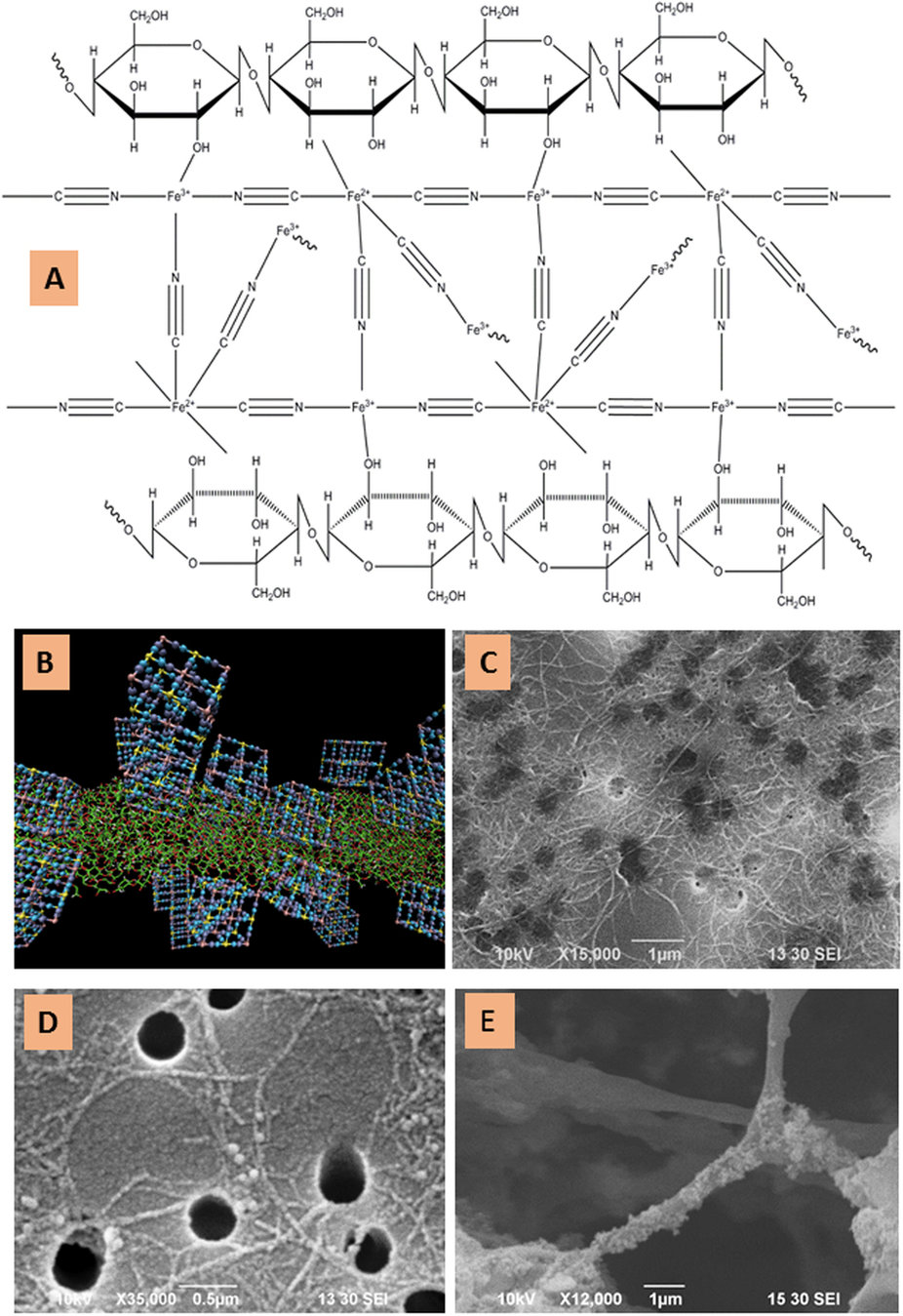放射性セシウムを選択的に除去する強力な吸着剤としてのセルロースナノファイバーを骨格にしたプルシアンブルーナノ粒子
Cellulose nanofiber backboned Prussian blue nanoparticles as powerful adsorbents for the selective elimination of radioactive cesium
2016年11月15日 Scientific Reports 6 : 37009 doi: 10.1038/srep37009

2011年3月11日の東日本大震災で、損傷した福島第一原子力発電所の原子炉から大量に放射性物質が飛散した。放射性汚染物質のうち、特に除染が必要なのはセシウムである。通常存在しているナトリウムイオン等の陽イオンがセシウムイオンに似た物質であり、セシウム除去の障害になっている。プルシアンブルー(PB)とも呼ばれるヘキサシアニド鉄(II)酸鉄(III)は、放射性セシウムを選択的に捕捉する最も有力な材料として知られているが、コロイドを形成し、水に溶けていく、いわゆる“PBの溶出問題”を解決しなければならない。本論文では、セルロースナノファイバー(CNF)とPBをナノレベルで複合させ、PBの溶出問題を解決する方法を報告する。PBをCNFとキレート結合を介して、CNFを骨格とするCNF/PB複合体を合成した。CNF/PB複合体は、水に対しての耐性が高く、放射性セシウムに対しての吸着容量が139 mg/gであり、分配係数(Kd)が百万(106)のオーダーとなって、除染材として優れた性能を持つことが確認された。さらに、CNF/PB複合体を配合したスポンジを用いた海水除染と福島の農地での除染試験では満足のいくデータが得られ、実用性という面でもCNF/PB複合体の有用性が実証された。
Corresponding Author
On 11 March 2011, the day of the unforgettable disaster of the 9 magnitude Tohoku earthquake and quickly followed by the devastating Tsunami, a damageable amount of radionuclides had dispersed from the Fukushima Daiichi’s damaged nuclear reactors. Decontamination of the dispersed radionuclides from seawater and soil, due to the huge amounts of coexisting ions with competitive functionalities, has been the topmost difficulty. Ferric hexacyanoferrate, also known as Prussian blue (PB), has been the most powerful material for selectively trapping the radioactive cesium ions; its high tendency to form stable colloids in water, however, has made PB to be impossible for the open-field radioactive cesium decontamination applications. A nano/nano combinatorial approach, as is described in this study, has provided an ultimate solution to this intrinsic colloid formation difficulty of PB. Cellulose nanofibers (CNF) were used to immobilize PB via the creation of CNF-backboned PB. The CNF-backboned PB (CNF/PB) was found to be highly tolerant to water and moreover, it gave a 139 mg/g capability and a million (106) order of magnitude distribution coefficient (Kd) for absorbing of the radioactive cesium ion. Field studies on soil and seawater decontaminations in Fukushima gave satisfactory results, demonstrating high capabilities of CNF/PB for practical applications.

